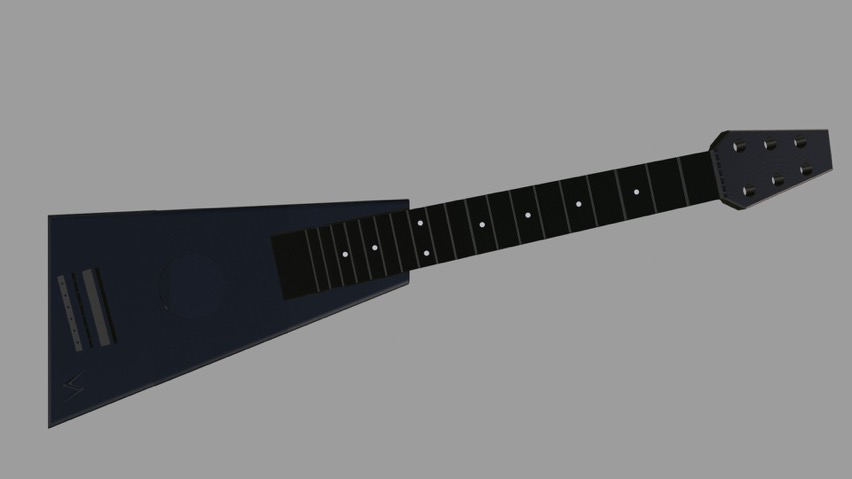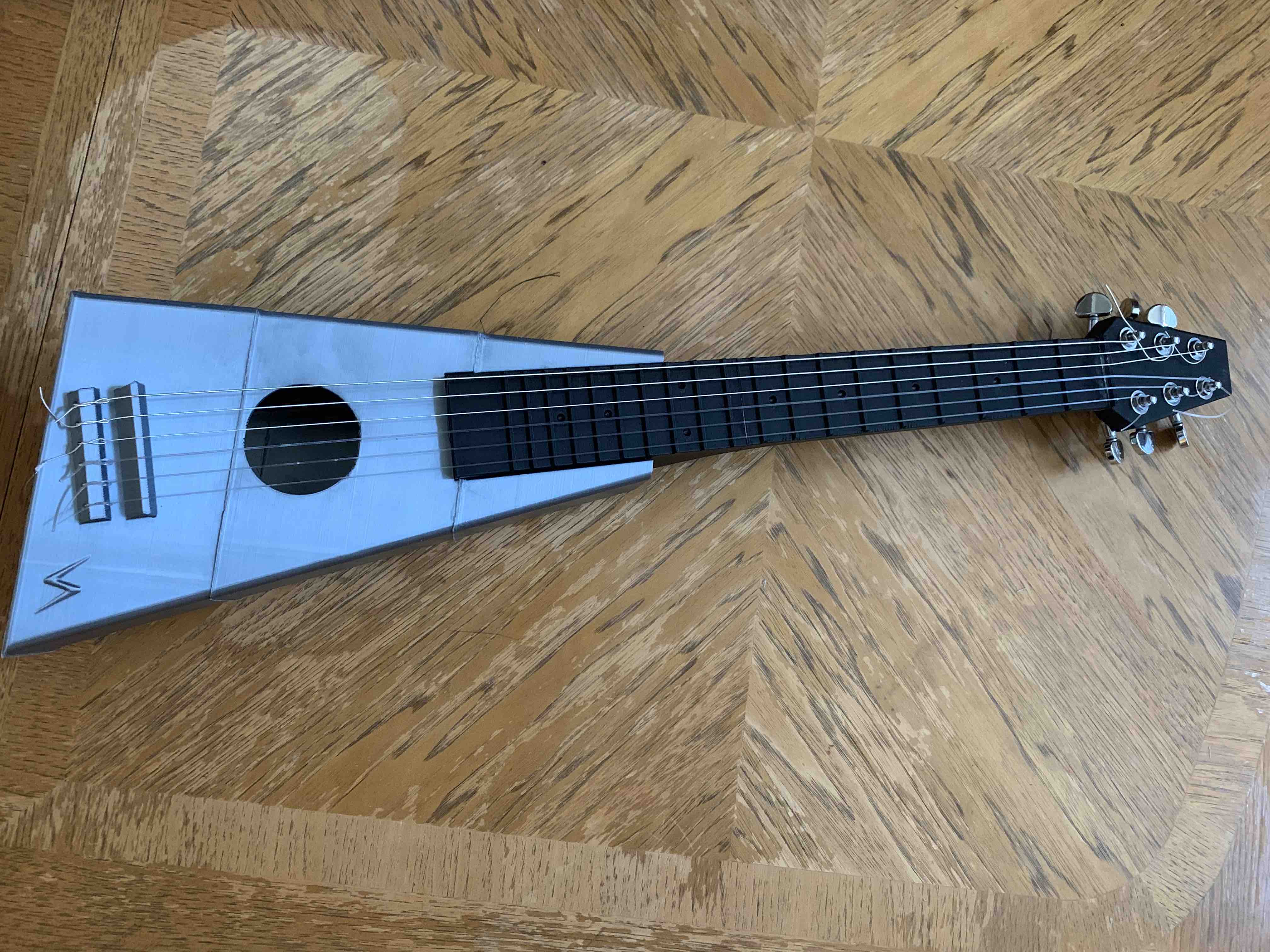You Wouldn't Download a Guitar, Right?
As you may know, I got a 3D printer back in March. Since then, I've printed all kinds of small and medium sized items, like a controller stand for my PlayStation. Now that I have some experience with the printer after hours of calibrating and troubleshooting, it's time for me to move onto larger, more challenging prints. I figured making an instrument would be a cool project, and I later discovered Solstie's acoustic guitar design. Let's see how it turned out.
Design

Solstie already did most of the heavy lifting with this design: each part is designed to print without supports and with great tolerances for parts integrating with other, non-printed parts. I noticed in the Thingiverse comments that people were mentioning small but noticeable issues with the design, like warping of the neck and head after prolonged use, though.
I set out to fix this before printing specifically by filling the cavity in the neck to make it more rigid. As you probably expected, I also added my signature bolt to the design.
Printing
Even though the guitar is smaller than most acoustic guitars, it's still much too big for my machine to print all at once. The body is split into three parts, the neck into two, and the head remaining one part. Most pieces printed between 12 and 18 hours, with the neck parts and head taking more than 26 hours to print all at once. Slicing and printing were generally straight forward up until some issues.
Failures & Mishaps

Most of the parts printed well despite small failures in the first few layers of some, but those were the least of my worries. I underestimated the amount of plastic each part needed, so I woke up one morning to an empty spool of filament and a half-printed part. There was also a time when a corner of the soundhole part for the middle of the body lifted off of the print bed, ultimately ruining the entire print of the body since it prevented good assembly.
These two issues, in addition to questionable print quality in some parts, led me to reprint the entire body, this time with a silky gray filament that I wanted to try out. That filament ended up printing in much higher quality than the original parts printed in black. It also worked out because the body could be gray and the neck and head could be black, giving it a pretty good two-tone look.
Assembly
Putting the pieces together was very straightforward. All the printed pieces were superglued together, and inserting the strings and tuning machines was as easy as assembling any other guitar.
How Does It Sound?
It has trouble staying tuned, but when it is tuned it sounds pretty good. It's pretty quiet since it's small and made of plastic, but it gets the job done! See for yourself.
Conclusion

This was a multi-week effort, largely because I started working full time this year, but I'm very satisfied with the result. The guitar is high quality for some $30 worth of plastic. Now I have an apetite for more challenging projects.
Here's to the spirit of making.